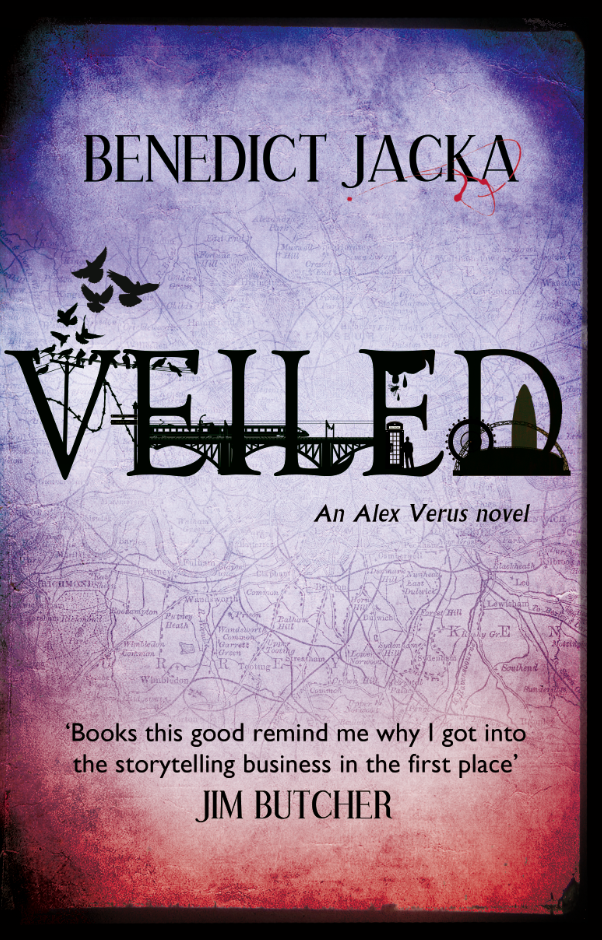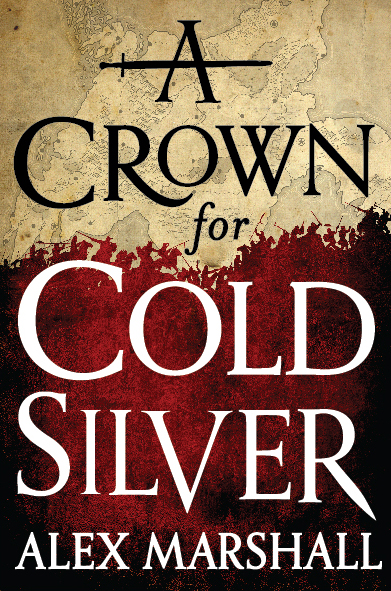The much-anticipated graphic novel of THE WAY OF SHADOWS, the New York Times bestselling epic fantasy of thieves and assassins by Brent Weeks, comes out this week from Yen Press and Orbit UK.
We interviewed Brent about the process of turning his classic fantasy tale into a comic book, and asked him all about his favorite examples of the medium:
JH: Was there anything that surprised you about having your work adapted into comic book form?
BW: The first time I saw Andy’s depiction of the Gyre estate, I had to stop for a second. The rest of the process had been pretty gradual—when we did character sketches, we went through a lot of emails, and a couple iterations of drawings, so they didn’t have the same surprise factor for me—but when I saw the Gyre estate, it hit me all at once. I’d described all these details; this was what I’d written about, but I’d never seen it as a whole. When your artist is talented, there are things about seeing a place that are simply better than reading about it.
The other thing that surprised me was how much little things can matter. Andy does great work with characters’ expressions, hitting just the right tone. That little extra extension on that line turns that grin from amused to sarcastic, or what have you. Similarly, something like how tight an alleyway is, can suddenly be important, because a character in a tight alley feels trapped, and acts differently than in a wide open street.
JH: Which particular character do you think has been captured most perfectly by Andy Macdonald’s art?
BW: I’ll go for a less obvious one. Roth is just the right balance of handsome and creepy.
JH: Was it a strange experience, going back so closely over THE WAY OF SHADOWS, or do you often reread and re-examine your older books?
BW: As little as possible! I always want to edit my old books. Hmm, that sentence could be tightened, couldn’t it? It was very challenging. One of the pleasures of reading my books is that there’s a ton of foreshadowing that looks like throwaway world-building on a first read that ends up being important two thousand pages later. So I had to not only load three books into my brain, but I had to anticipate how each necessary change of adapting the first novel into graphic novel form would ripple through the second and third books. “Okay, this doesn’t happen any more, and that was going to pay off in book 2 when this happens, so now, in graphic novel 2, we’re going to have to do this other thing instead… But does that cause problems in book 3?” Oh, and I was finishing a not-so-simple little novel called THE BROKEN EYE. My assistant, Elisa, was invaluable in the process of keeping everything straight.
JH: Comics and graphic novels are an essentially collaborative medium, requiring a lot of co-operation between the artist and writer. Have you ever worked on something that involved this much collaboration?
BW: Never to this degree. We made a book trailer for THE BLACK PRISM, and I wrote lots of emails and script ideas back and forth (far more than you would think necessary for a two minute trailer, I guarantee!), but that was over about a month. This was a different level entirely.
I should point out, too, that it isn’t just collaboration between artist and writer! The original script adaptation was by Ivan Brandon, and throughout my editor JuYoun Lee was invaluable in the process, not only in feedback and scripting, but also in allowing me to be the difficult artist from time to time. I mean, editors have to make the business work, so a few times I wrote to her, “Look I just added a page to this chapter. I know we’re already over, but we need a full page for this reveal, or it will lack punch. Here’s the new script.” I’m sure she knew exactly how much that was going to cost—art costs, printing costs, extra thickness to the book, possibly fewer books per box which can hurt ordering, and so forth if you do it more than a couple times—and she let me get away with it when we needed to.
That said, I try not to play the diva, especially when it’s a medium I’ve got little experience in. I was lucky to be joined in the journey by people who know a lot more than I do.
JH: Who are your favourite heroes from comics and graphic novels?
BW: Can I confess something? I’ve always enjoyed comic books, but for a long time I had a fundamental reservation about them as art. I thought they were bad art. Partly this is the fault of the whole Death of Superman debacle. Since then (if not before, I’m not an expert), but since then they’ve felt like the ultimate playground for Plot Armor. No character will ever die. No character will ever settle down with one girl, and that’s it for all time. There’s no final story, no closure, even though they pretend there is constantly. And the reason there can be no final story is because money. You can’t kill Wolverine for good, because no matter how many copies of that final plot arc you could sell, you’d be killing the goose who lays the golden eggs. Wolverine is your year-in, year-out steady earner, and he will be for fifty years. A hundred if Marvel has its way. So the story has to account for reboots, and refreshes, memory-losses and reunions. (In some cases, they do that far better than others.)
So, to purist, younger me, comics in the Marvel vein were the biggest examples of art prostituted to money I could imagine. And yet they got a pass somehow—because it’s fun and well-done, I guess.
But I had an idea recently of Wolverine (a favorite since I was young), as a mythic character, rather than as a disjointed franchise. When you read Homer’s Odysseus, he’s a complete man, perhaps the ideal man in the Greek understanding of virtue. When you read Virgil’s treatment of the same character (Latinized to Ulysses, but ostensibly the same character), you realize they have very little in common. Virgil is trotting out the Greek hero to make him look tawdry next to the real stud, Aeneas. (Who just so happened to play for the home team, Rome.) They aren’t the same character—when Virgil handles Odysseus, he handles him as a mythic type, there to be useful in setting up the story that Virgil really wants to tell.
So when you ask “Who is your favorite character?” I have to politely say I don’t believe Wolverine as Wolverine is really a character anymore. Mark Millar’s Wolverine isn’t my favorite, but the idea of Wolverine is.
That said, things are simpler where we have only one writer and artist: I really like Bode and Tyler Locke of Locke and Key by Joe Hill (amazing art by Gabriel Rodriguez).
JH: Can you recommend any comic books which are ideal for fantasy fans?
BW: If you’ve never read a graphic novel and are skeptical about the kind of stories they can tell, check out I Kill Giants by Joe Kelly, which features a fifth-grader named Barbara.
Marvel’s 1602 is a fun re-visiting of the Marvel characters if they’d appeared in Elizabethan times (and goes nicely with my thesis above!). Locke and Key is a little more on the horror side, and though I don’t enjoy horror, I thought it was amazing. Literally the best graphic novels I’ve ever read. Peter V. Brett (of The Warded Man fame) has done a 6 comic book arc for Red Sonja. As for others… well, I’m always looking!
JH: The ultimate comic book question: who would win in a fight, Batman or Superman?
BW: I think Batman would know better than get in a simple fistfight with a bulletproof flying alien, so I like to think he’d change the rules of the engagement—a fight over who makes a tux look the best, perhaps, or who can destroy a villain first. Then I’d give an edge to the subtle thinker of the two.










